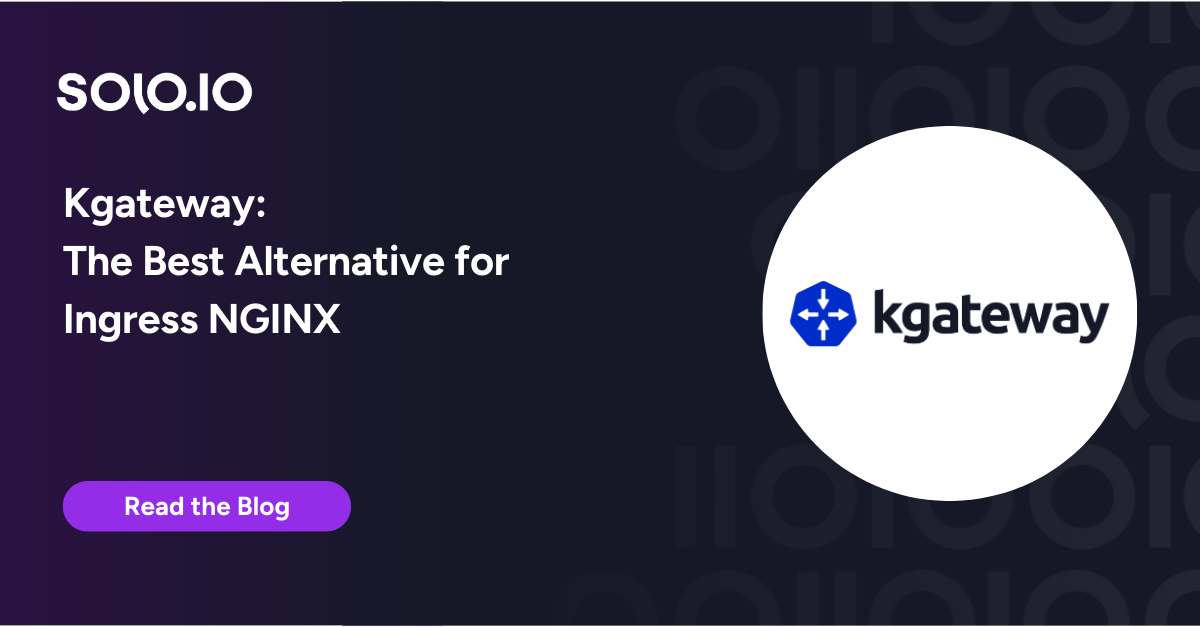For years, Istio has provided an option to deploy an “Egress Gateway“. This powerful mechanism allows directing outbound traffic through a Gateway, where various policies can be uniformly enforced. This includes authorization, auditing, observability, and more.
While quite powerful, setting up an egress gateway has historically been extremely complex. Even just the most basic case of directing traffic for a certain domain through the egress gateway requires carefully sequencing 5 different Istio objects together (see documentation), and that is before we add any advanced policies we want to apply to the traffic!
With Istio’s ambient mode and Gloo Mesh, the configuration required to setup an egress gateway is now much easier to implement and provides better functionality and management of traffic across a mesh. Let’s take a deeper look in this blog.

Istio’s ambient mode and Gloo Mesh makes it easy
With ambient mode, controlling egress traffic is a breeze. In ambient mode, the classic sidecar proxy is removed, in favor of standalone “waypoint” proxies which can handle traffic on behalf of a service. This looks like:

Services can bind to a waypoint, and Istio will automatically send all traffic to those services through the waypoint.
The trick here is that we can actually bind external domains (represented by ServiceEntry) to a waypoint as well, just like we can for our internal services. Just like with Services, traffic to these domains will automatically be directed through the waypoint proxy.

This dramatically simplifies the configuration of egress gateways, while still allowing the same rich functionality. Traffic observability can then be visualized via Gloo Mesh.
Trying it out
First, on a cluster with Istio ambient mode installed, I’ll deploy a test application and enroll the namespace into the ambient mesh:
Out of the box with Istio’s ambient mode, I get automatic mutual TLS when communicating within the mesh. Extending Istio’s ambient mode, Gloo Mesh adds HTTP telemetry.
We can see from our test application, we can still send outbound traffic like normal:
Our goal is to make this traffic go through an egress gateway, so we can uniformly apply policies and access control to this traffic. With Istio’s ambient mode, this is much easier than it was with sidecars.
First, we just need to deploy a waypoint proxy to serve as our egress gateway. We only need to do this once, and can share it for each additional domain we want to capture traffic for.
Next, I’ll create a ServiceEntry for httpbin.org:
This is all we need! Because we deployed the waypoint with –enroll-namespace, all services in the istio-egress namespace will automatically be attached to the waypoint. If we wanted to opt-in on a per-service basis, we could explicitly label each Service/ServiceEntry with istio.io/use-waypoint: waypoint.
Now that the ServiceEntry is attached to the waypoint proxy, the previous call will automatically traverse the waypoint proxy we deployed without changes to our application, all secured by mutual TLS:
We can now also observe the traffic, with logs, traces, and metrics. For instance, inspecting the waypoint logs will show the request we just made:
Policy Enforcement
One of the most powerful features of an egress gateway is the ability to enforce access control policies for all outbound traffic. These can range from simple domain allowlists, to complex policies such as data loss prevention.
In this example, we will limit low-privilege applications to only to the /get endpoint, but allow a high-privilege application to access all of httpbin.org. To do this, we apply an AuthorizationPolicy attached to the ServiceEntry we created.
Now from my low privilege application, we can see our POST requests are denied:
From my admin application, the POST request succeeds as expected:
TLS Origination
Another common policy to apply at an egress gateway is TLS origination. In the above examples, while all of our communication inside the mesh is automatically encrypted by Istio, once the request leaves the cluster it is in plaintext over the public internet – a major security issue.
Fortunately, we can add TLS at the egress waypoint before the request leaves the cluster. This is especially useful when communicating with services that require client authentication, where access can be controlled in a centralized manner; in this example, however, we will just do simple TLS.
This just requires a small change to the ServiceEntry and a DestinationRule configuration
Now all of our requests are automatically upgraded to HTTPS, without any changes to our application:
Learn More About Gloo Mesh
Managing egress traffic and applying usage, security, and other organizational policies is critical in most enterprises. Additionally, doing this is fairly fragmented. With Istio and Gloo Mesh, we make configuring traffic, whether it’s ingress, east/west, or egress traffic, consistent throughout. Other things you should think about include how this fits in with defense in depth techniques like CNI / Network Policy.
At Solo.io we are working with customers deploying mesh technologies to consistently manage application traffic in all directions. We’ve built Gloo Mesh to simplify this and avoid the pitfalls that may arise. Istio ambient mode represents further simplification and is available in Gloo Mesh. Learn more about Gloo Mesh today.




























%20a%20Bad%20Idea.png)











%20For%20More%20Dependable%20Humans.png)











